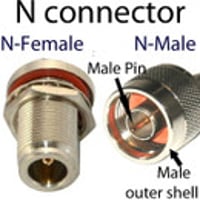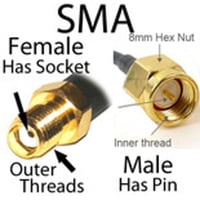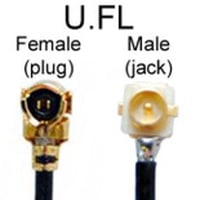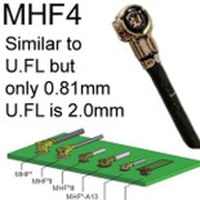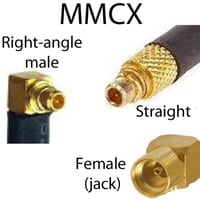Type-N to Type N Cables: Extension & Male to Male
Type-N Connectors: Maximum Corrosion Protection
Composition of Materials: Weatherproof Plating
- The design of materials is focused on achieving a robust and weather-resistant connection.
- Body of the Connector: Brass with Nickel Plating: This plating-variant is the most durable against corrosion compared to all other brass alloys with plating (surpassing even gold plating), making it suitable for prolonged exposure outdoors.
- Standard Nickel-Plated Connectors: It's a standard for these connectors to withstand a salt spray test of 70 hours without showing signs of corrosion.
- Enhanced Corrosion Resistance for 120 Hours in Salt Spray Test: Customizing the connector is necessary for this level of durability. While there's no charge for the modification, it does lead to a 4-week increase in delivery time and a 20% rise in the cost compared to the standard cable assembly.
- Central Conductor: Beryllium Copper with a Coating of Gold
- Crimp Sleeve: Copper with a Nickel Coating
- Insulating Material: PTFE
- Both N-male and N-female connectors are equipped with a rubber O-ring internally. This ensures a secure, water-resistant connection when paired with an opposite-gender N-type connector that also has a rubber O-ring, achieving an IP-67 rating when used with Data Alliance’s N-female connectors that include a rubber O-ring.
Frequency Ranges & Electrical Specs
- The cable for this antenna is compatible with frequency bands ranging from 900GHz to 6GHz.
- Impedance: 50 Ohms
- Capacitance: Roughly 24.5 pF/ft (80.3 pF/m)
- Attenuation (loss of signal):
- At 900 MHz: 0.33 dB/m (0.09 dB/ft)
- At 2400 MHz: LMR-200 = 0.54 dB/m (0.12 dB/ft)
- At 3500 MHz: LMR-200 = 0.67 dB/m (0.21 dB/ft)
- At 5800 MHz: LMR-200 = 0.87 dB/m (0.264 dB/ft)
Compatibility with Wireless Protocols & Applications:
- Supports all WiFi standards for 2.4GHz or 5GHz networks: Wi-Fi6 and WiFi6E (802.11AX), 802.11AC, as well as previous standards 802.11N, G, and B.
- Suitable for various cellular wireless technologies such as LTE / 4G, LTEm, GSM / 3G, 5G, WiMax.
- Compatible with several Internet of Things (IoT) wireless protocols including Bluetooth, ZigBee, LoRa, M2M, RFID, NB-IoT.
Dimensions & Additional Details of N-Type Connectors
- The internal diameter of the N-male connector is 0.620-inch (1.57 cm), with the N-female having the same measurement.
- The designation of connector gender is not based on external threads but rather on the internal pin, which may seem non-intuitive.
- N-Type connectors are among the largest RF connector varieties and are commonly used on large, especially outdoor, antennas.
- Our N-Type connectors are designed with a threaded coupling mechanism and are compatible with any N-Type connectors that meet the MIL-C-39012 standard, ensuring reliable RF and mechanical performance. They are crucial in systems where such performance is key.
- The N (male) connector features a knurled design to enable improved grip during installation.
N-Type to N-Type Cables: Male to Male and Extension (Male to Female)
N connector extension cables are coaxial cable assemblies that are terminated with N connectors at both ends. The N connector cables may be:
- Male to male: See our N-male to N-male cables here
- N-female to N-female
- N-male to N-female: All of our N-female to N-male cables are in this subcategory (on the page you are on).
N connector cables are routinely used as antenna cables for N connector antennas, or test cables for testing and measurement devices. The power handling and ruggedness of the N connector lend it to a variety of outdoor applications including telecommunications and wireless networking cables for outdoor antennas.
N connectors can be assembled with different kinds of coaxial cable, depending on applications. They are available in a variety of lengths and cable diameters. The best quality N connector cable assemblies use double-shielded, low-loss, coaxial cables that deliver exemplary performance across a wide range of applications.
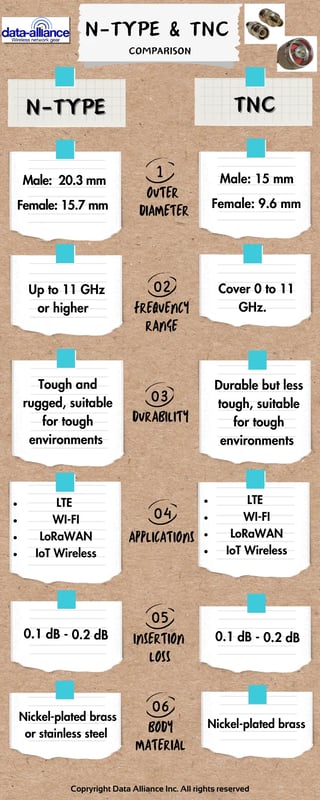
Best N connector cable assemblies
These N connector cables combine the N connector with high-quality, double-shielded cable that is known for its low attenuation and reliable performance. The N connector cables are available in two diameters in the gender combination of your choice.
LMR 200 N connector cable
Our version of the LMR 200 is a durable coax cable that is ideal for subminiature and medium connectors. Use it to replace RG 58 in a variety of applications.
LMR 200 is a flexible, low-loss cable that is routinely paired with Type N connectors. It has an overall diameter of 0.195 inches (4.95 millimeters). As a double-shielded cable it has an extremely low level of signal loss along its length. It is also highly flexible, with a bend radius of 0.5 inches (12.7 millimeters).
LMR 200 physical specifications
Our LMR 200 analog is fabricated to achieve the “LMR” standard of attenuation rates and flexibility. This is down to its distinctive composition which consists of:
- A solid bare copper inner conductor of 0.044 inches (1.12 mm) diameter for excellent electrical and thermal conductivity.
- A foam polyethylene (PE) dielectric that has a diameter of 0.06 inches (1.52mm). A foam insulator is used to increase the flexibility of this coax.
- Unbonded aluminum tape forms the first shielding layer of LMR 200.
- Tinned copper outer braiding makes up the second layer of shielding of LMR 200, and has a diameter of 0.144 inches (3.66 mm)
- The jacketing of LMR 200 is made of flexible PVC, polyethylene, or fire-resistant polyethylene, for indoor or outdoor installation. It has an overall diameter of 0.195 inches (4.95mm).
LMR 200 electrical specifications
- LMR 200 has a characteristic impedance of 50 Ohms.
- The frequency range of LMR 200 is DC to 5.8 GHz.
- Its capacitance is 24.5 pF/ft (80.3 pF/m).
- The inductance of LMR 200 is 0.061 uH/ft (0.2 uH/m).
- 83% is the velocity of propagation (Vp) of LMR 200.
- Because this coax is double shielded, LMR 200 has shielding effectiveness that is greater than 90 decibels.
- The maximum voltage of LMR 200 is 1000 volts.
LMR 400 N connector cable
LMR-400 is a larger diameter hard-wearing and flexible communications cable that is used for rugged outdoor installations. It is also double-shielded and low loss. LMR 400 cable has a diameter of 0.405 inches (10.29 millimeters) but is still flexible and has a bend radius of 1 inch (25.4 millimeters) LMR 400 is the routine swap-in for RG 8 coaxial cable.
LMR 400 physical specifications
- The large-diameter center conductor of LMR 400 is made from solid beryllium copper clad aluminum (BCCAl). The diameter of the inner conductor is 0.1.0 inches (2.74 mm).
- LMR 400 also uses foam polyethylene (PE) as its insulator, which improves the flexibility of this thicker diameter coax. The dielectric has a diameter of 0.285 inches (7.24 mm).
- The polyethylene insulator is surrounded by a layer of unbonded aluminum tape which is the first shield layer.
- The second shielding layer is made from tinned copper outer braiding and has a diameter of 0.320 inches (8.13 mm)
- LMR 400 has a hardwearing flame-retardant polyethylene or PVC jacket with an overall diameter of 0.195 inches (4.95mm).
LMR 400 electrical specifications
- The characteristic impedance LMR 400 is 50 Ohms.
- LMR 400 can support frequencies up to 6 GHz.
- LMR 400 has a capacitance of 23.9 pF/ft (78.4 pF/m).
- The inductance of LMR 400 is 0.060 uH/ft (0.20 uH/m).
- LMR 400 velocity of propagation (Vp) is 84%.
- Because of the double-shielding of LMR 400, its shielding effectiveness is greater than 90 decibels.
- LMR 400 has excellent power handling with a maximum voltage of 1000 volts.

